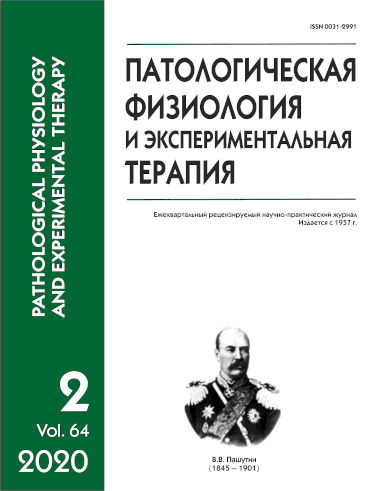Stress-protective effect of the Cimicifuga dahurica (Turcz.) Maxim tincture in chronic emotional stress
Abstract
Cimicifuga dahurica (Turcz.) Maxim. is a perennial plant of the Ranunculaceae family. In Tibetan medicine, C. dahurica is included into medicinal collections used for the treatment of gza diseases (diseases “inflicted by demons”), such as stroke, palsies, and other functional disorders of the nervous system. In mid-20th century, the C. dahurica tincture was used for the treatment of hypertension. The C. dahurica tincture has a sedative effect; it limits motility, exploratory activity, and reflex excitability in animals and prolongs the narcotic sleep. The aim of this study was to evaluate the stress-protective effect of C. dahurica tincture in chronic emotional stress. Methods. Experiments were performed on Wistar rats weighing 180-200 g. Chronic emotional stress was produced by four-day restraint of animals in plastic cases with simultaneous water immersion. The C. dahurica tincture was administered to animals at a dose of 0.5 ml/kg for 7 days, once a day; the last dose was administered 30 min prior to testing. The following parameters were determined: intensity of the Selye’s triad, plasma concentrations of ACTH, corticosterone, and catecholamines; serum concentration of malonic dialdehyde; serum activity of catalase; and superoxide dismutase activity in red blood cells. Results. The C. dahurica tincture increased the tolerance to chronic emotional stress and restricted involution of immune-competent organs, the thymus and spleen, by 22% and 24%, respectively (p<0.05), adrenal gland hypertrophy by 34% (p<0.05), and development of stress-induced stomach ulcers. These effects could be due to inhibition of the sympathoadrenal system and the hypothalamicpituitary-adrenocortical axis, inhibition of free-radical processes, and simultaneous activation of endogenic antioxidant systems. The C. dahurica tincture inhibited lipid peroxidation processes thus reducing the content of malonic dialdehyde by 24%. Also, the tincture potentiated the endogenous antioxidant system by increasing activities of catalase and superoxide dismutase 1.6 and 1.3 times, respectively. Conclusion. The stress-protective effect of the plant remedy is due to contained bioactive substances, such as phenolic compounds and saponins.






